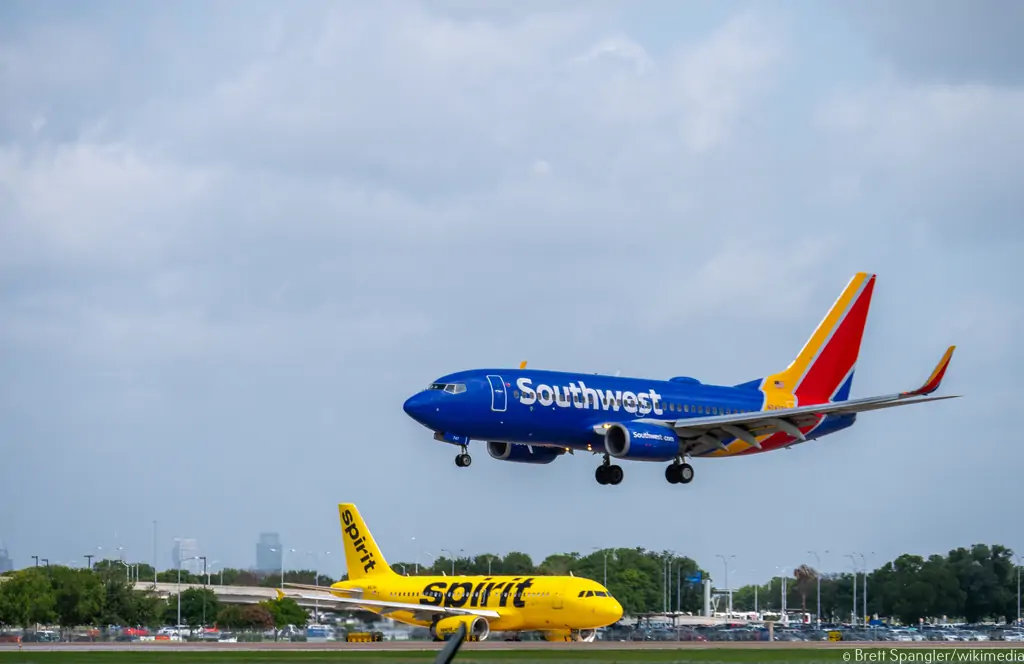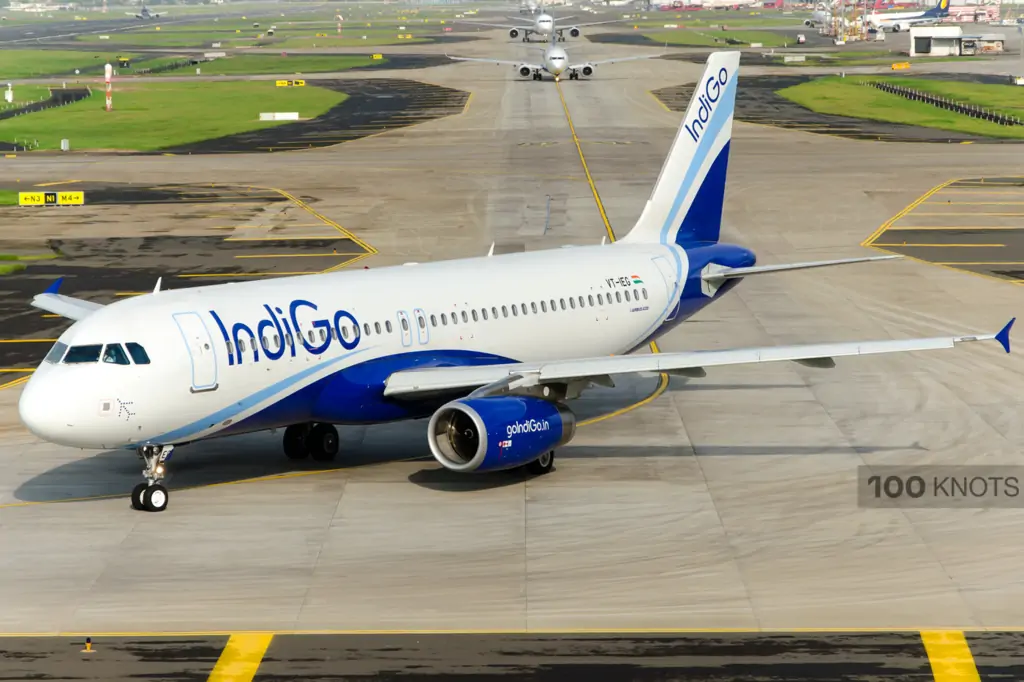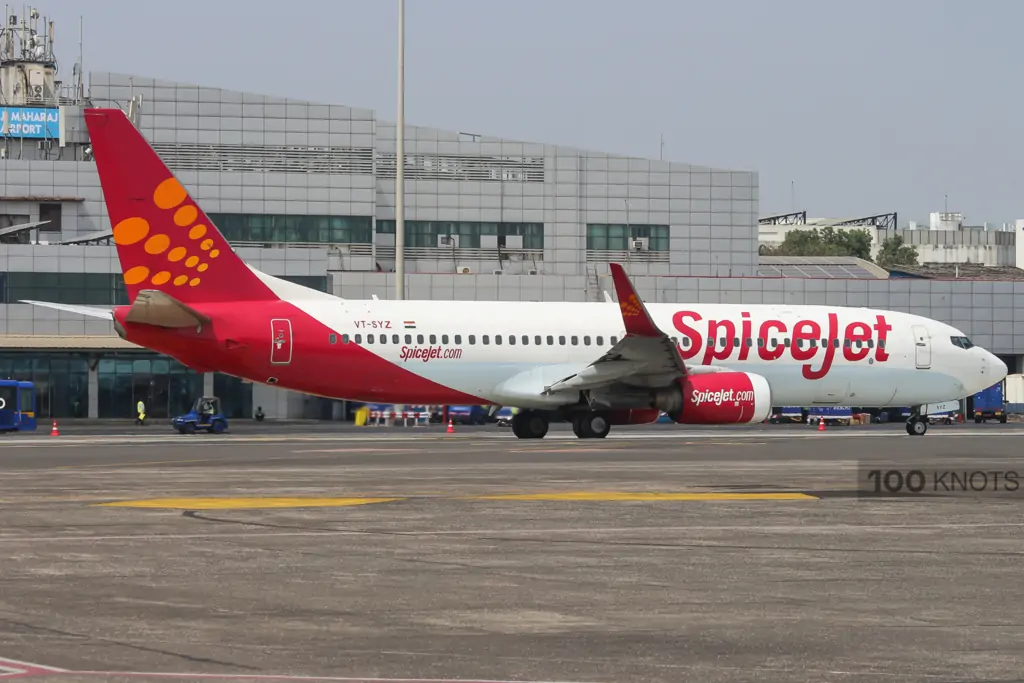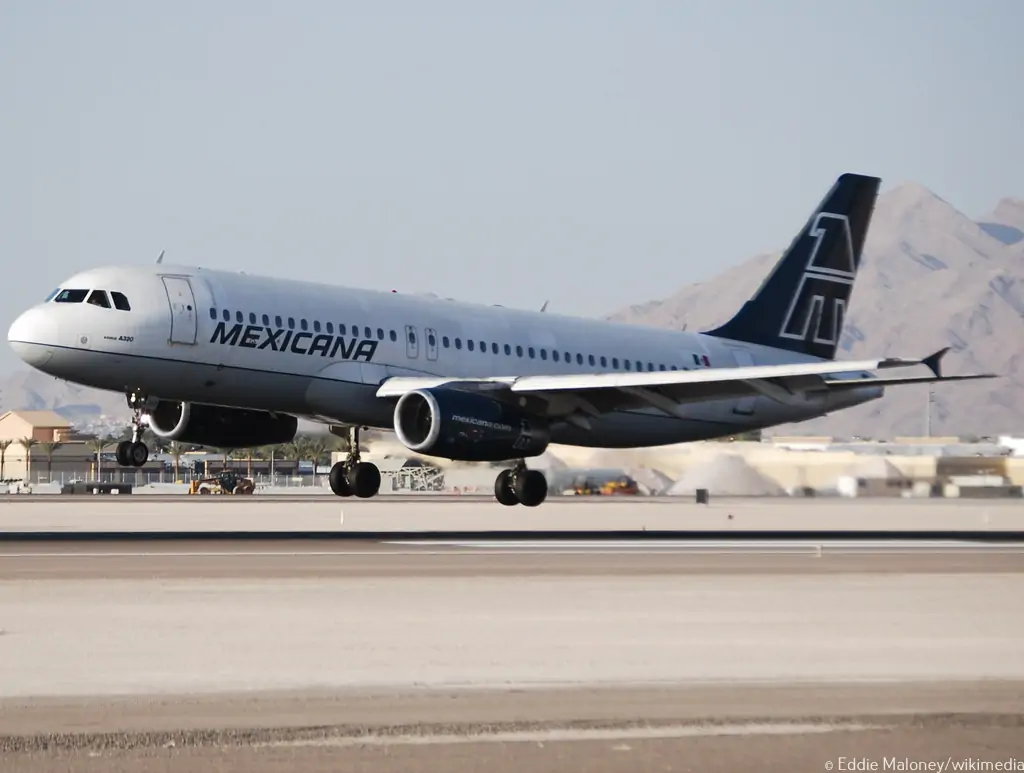The Directorate General of Civil Aviation (DGCA) has deregistered three planes of low-cost SpiceJet at the request of lessors, the latest in a string of troubles for the cash-strapped airline. Of the three, two were non-operational and its operations had not been affected, SpiceJet said on May 19.
Earlier this month, Lessors Wilmington Trust SP Services, Sabarmati Aviation Leasing and Falgu Aviation Leasing approached the civil aviation regulator, requesting the deregistration of three Boeing 737-800s over non-payment of dues. The DGCA deregistered the planes with call signs VT-MXJ, MXF and SZJ.
The move comes a few days after the no-frills airline had said it was taking steps to bring a part of its grounded fleet back in the air after rival Go First opted for voluntary insolvency. The airline also said it had no plans to file for insolvency even as several of SpiceJet’s aircraft remain grounded due to various reasons.
"Out of the five planes listed for deregistration, one lessor has already requested DGCA to suspend the deregistration of two aircraft. Out of the remaining three, two were grounded for a long period and not operational. Hence, there is no impact on our operations. We remain focussed on bringing on our grounded fleet back into operations," a SpiceJet spokesperson said.
SpiceJet is facing insolvency resolution proceedings over the non-payment of dues amounting to INR 40 crore for four B737-800s. The National Company Law Tribunal (NCLT) has issued a notice to the airline and the hearing is slated for May 25.
The Gurugram-based airline is also caught in a legal wrangle with Credit Suisse, which moved a contempt of court petition in the Supreme Court. The court has given SpiceJet time till July 18 to pay Credit Suisse USD 24 million, which the Swiss firm is seeking for servicing of aircraft engines and components in 2013.
A few months ago, Carlyle Aviation converted its USD 100 million dues into equity and acquired compulsorily convertible debentures in SpiceXpress, the airline’s cargo arm, giving it a 7.5% stake.
SpiceJet owes Aircastle around $6 million. The NCLT asked SpiceJet to file a response to the plea and explore options for settlement. The tribunal has listed the insolvency plea against SpiceJet on May 25. The airline said earlier that it has no plans to file for insolvency. The SpiceJet statement added: "Our lessors have supported us through thick and thin and continue to do so and we are grateful for their support and confidence".
According to an aircraft tracking website, SpiceJet had 67 aircraft in its fleet comprising Boeing 737s, B737 Max and Bombardier-Q400s. Out of these, only 37 were in operation as on May 3. As of date, approximately 27 aircraft out of its fleet of 61 aircraft are grounded due to financial issues and need of spare parts, as per data from flight tracking website flightradar24.
The carrier has been in talks with lessors, investors and lenders in India and abroad for renegotiating contracts, raising funds, and restructuring.
In January 2020, SpiceJet’s domestic market share was at 16.6%, with a fleet size of 119. This fell to 7.3% in January 2023 with a fleet size of 65 jets; however, only 34 of its planes are currently operational. The market size of the airline has further reduced to 5.8% as per April data from DGCA.
SpiceJet CMD Ajay Singh had recently ruled out filing for insolvency. “There is absolutely no question of filing for insolvency,” he had said. The past few months have seen some lessors filing applications with DGCA to repossess their planes from the airline. “We have a great relationship with all our partners. Our lessors have supported us through thick and thin and continue to do so and we are grateful for their support,” Ajay Singh had said.
The deregistering of SpiceJet’s planes is the latest turbulence to hit the Indian aviation sector. Jet Airways bid to fly again has jolted to a halt, Go First has been granted bankruptcy protection but faces uncertainty and SpiceJet continues to face lessors’ wrath.
On May 19, the stock closed 1.08% down from the previous close at INR 29.23.
Read next
American Airlines Reach an Agreement with Pilots and Increase Pay by 21% in Tentative Contract
Abhishek Nayar
20 May 2023

American Airlines pilots recently achieved a significant milestone in their ongoing negotiations regarding contracts with the carrier. According to sources, the pilots have agreed in principle to a new four-year tentative contract that will significantly increase their compensation. This development comes at a critical juncture, just before the peak summer travel season, and is anticipated to have profound implications for both pilots and passengers.
Negotiations with American Airlines
American Airlines and its pilots have been negotiating for several years. These discussions focused on an array of issues, including wages, working conditions, and career advancement. Finding a mutually advantageous arrangement has been difficult due to the complexity of the aviation sector and the airline's financial considerations.
Present Situation
The aviation industry is heavily reliant on qualified pilots to maintain safe and efficient aircraft operations. As one of the leading airlines in the United States, American Airlines understands the importance of attracting and maintaining outstanding pilots. Pilot compensation is of the utmost importance in this endeavor since it significantly impacts job satisfaction and the airline's ability to compete in the labor market. After years of discussions with the largest U.S. airline, American Airlines pilots have agreed in principle on an agreement that increases their compensation by 21% in 2023 as part of a new four-year tentative contract, according to sources on Friday, ahead of a busy summer travel season.
Details of the Agreement
The recently signed four-year tentative agreement is a significant step forward in the discussions. The upsurge is likely to significantly increase pilots' wages, reflecting the value they offer to the airline. According to three people with intimate knowledge of the subject, American pilots would receive a 21% pay increase in 2023, a 5% pay increase the next year, and a 4% pay increase the following two years under the proposed agreement. Pilots would also receive a 3% raise when the proposed contract becomes amendable in 2027, according to the individuals, who spoke on the condition of anonymity because the specifics are not yet public. American's contract includes schedule enhancements, which they say are crucial for pilots seeking a better work-life balance in a job that frequently requires them to be away from their families for days at a time.
The Impact on Pilots
Pilots are likely to benefit from the higher remuneration package. Aside from the obvious financial advantages, increased revenue may enhance job satisfaction and morale among the pilot personnel. Pilots who feel respected and suitably compensated for their expertise and responsibilities are more likely to be motivated and devoted to their job. Furthermore, the new contract might have an impact on pilot retention and recruitment. American Airlines is portraying itself as an enticing alternative for pilots seeking stability and fair remuneration by offering competitive wages and attractive perks. This might result in a larger talent pool, ensuring the airline has a consistent supply of experienced pilots in the long run.
Passenger Experience
The influence of the agreement on the passenger experience is an essential concern. Well-compensated pilots are more likely to be motivated and focused on their duties, which contributes to improved flight safety. With the hectic summer travel season approaching, maintaining strong service standards is critical. The agreement's favorable impact on pilot morale may result in a more pleasant and delightful experience for passengers.
Implications for Industry
The pilots' agreement with American Airlines establishes a significant precedent in the aviation sector. Other airlines and their pilots will keenly examine the contract's evolution and possible incentives. It may promote similar negotiations between pilots and management in other companies, potentially resulting in improved wages and working conditions throughout the industry. The agreement also emphasizes the need to maintain positive labor-management partnerships in the aviation industry. Airlines and pilots may build mutually advantageous contracts that accommodate the changing demands of both sides by working together and finding common ground.
Conclusion
With their new compensation agreement, American Airlines pilots have reached a critical milestone after years of discussions. As part of the four-year tentative agreement, the airline will enhance pilot remuneration by 21% in 2023, demonstrating the airline's acknowledgment of the pilots' critical position and the value they offer to the company. This agreement is likely beneficial for pilots, passengers, and the aviation industry as a whole.
With Inputs from Reuters
Read next
The Mexican aviation industry has always been dynamic, with a mix of national and international carriers meeting the country's expanding need for air travel. The Mexican Secretariat of Finance and Credit Public has approved the formation of a new state carrier, Aerolínea del Estado Mexicano, in a significant milestone. This decision is anticipated to impact Mexico's aviation sector's future and create new prospects for both travellers and the economy. The airline's commercial name will most likely be Mexicana de Aviación.
The History of the Mexican Aviation Industry
Mexico has a flourishing aviation industry, with numerous major airlines based there. Air travel demand has continuously grown in recent years, owing to reasons such as economic expansion, tourism, and corporate activity. Existing national and international carriers have played an important role in linking various places within Mexico and easing international travel. However, there is a need for a new player who can fill certain market gaps while also serving the interests of the state.
Present Scenario
In Mexico, the government's attempt to build a new state carrier is still ongoing. The Secretariat of Finance and Credit Public of the government approved the development of a state startup capable of operating scheduled passenger flights in both domestic and international markets. In accordance with details released on Thursday, the Mexican Army would control 99% of the new company's shares, with the Army's National Bank owning the remaining 1%. The new carrier will cost both parties 1 million pesos ($56,000).
The Requirement for a New State Carrier
Aerolínea del Estado Mexicano was founded on the understanding that a state-owned airline may play an important role in supporting the country's aviation infrastructure, economic growth, and regional connections. The government intends to improve access to underserved locations, encourage tourism, and increase domestic travel. By establishing a state carrier, Mexico may gain more control over its air transportation network while still encouraging healthy market competition.
Mexicana de Aviación: A Renowned Commercial Name
While the new state carrier's official name is Aerolínea del Estado Mexicano, it is intended to operate under the commercial name Mexicana de Aviación. Mexicana de Aviación was previously the country's premier carrier; hence, it has historical significance in the Mexican aviation industry. By adopting this well-known moniker, the new state carrier hopes to pay respect to its predecessor while also embracing a new beginning.
Potential Implications for the Mexican Aviation Market
Aerolínea del Estado Mexicano, also known as Mexicana de Aviación, is projected to have a substantial influence on the Mexican aviation business. The introduction of a state carrier may result in better competition, higher service quality, and more alternatives for travellers. Existing airlines will almost certainly experience more competition and may need to improve their offers in order to maintain their market share. This advancement may also spur industrial innovation and the launch of new technology.
The Benefits and Drawbacks of a State Carrier
A state-owned airline carries with it a variety of advantages and disadvantages. On the plus side, it allows the government to have a say in strategic choices, prioritise public interest, and assure the availability of critical air services in underserved areas. A state carrier can also help to create jobs, support economic growth, and promote tourism. However, for long-term success, difficulties like operational efficiency, financial sustainability, and retaining competitiveness must be addressed.
Comparison with Existing Mexican Airlines
As Aerolínea del Estado Mexicano enters the market, comparisons to incumbent carriers are unavoidable. Established national and international carriers in Mexico have built up their presence and dedicated client bases. The new state carrier must distinguish itself through competitive pricing, service quality, route networks, and the customer experience. Mexicana de Aviación can carve out a niche and attract a varied spectrum of travellers by utilizing its unique status as a government-backed entity.
Expectations and Experiences of Customers
Customer expectations are critical to establishing an airline's performance in an increasingly competitive aviation industry. From the ticket process to boarding and in-flight amenities, passengers expect a smooth and pleasurable experience. Aerolínea del Estado Mexicano must prioritize client satisfaction by providing personalized services, straightforward booking systems, capacious cabins, and on-time performance. The new state carrier may establish a loyal client base by continually fulfilling and surpassing consumer expectations.
Routes and Destinations that Could Be Explored
The new state carrier should establish routes and locations that are strategically aligned with the country's economic growth ambitions, tourist goals, and passenger demand. Aerolínea del Estado Mexicano can aid in the development of regional economies and increase tourist income by linking underserved communities, increasing internal travel, and developing international linkages. Finding lucrative routes and entering new markets will be critical to the airline's success.
Economic Growth and the Creation of Employment
Aerolínea del Estado Mexicano's establishment has the ability to provide jobs and economic prosperity. The airline will need a diversified workforce, including pilots and cabin crew, ground crew, maintenance professionals, and administrative personnel. By creating job opportunities, the state carrier may help reduce unemployment, improve living standards, and stimulate economic activity in the aviation and allied industries.
Environmental and Sustainability Considerations
Aerolínea del Estado Mexicano should prioritize environmental concerns in its operations as the aviation industry strives for sustainability. Investing in fuel-efficient aircraft, implementing environmentally friendly practices, and investigating alternative energy sources can all help lower the airline's carbon footprint. The state carrier may attract environmentally aware travellers and contribute to Mexico's broader sustainability goals by displaying a commitment to environmental responsibility.
Conclusion
The approval of Aerolínea del Estado Mexicano is a significant step forward in the Mexican aviation industry. The new state carrier, which will be known commercially as Mexicana de Aviación, has the ability to alter the industry, boost connectivity, and stimulate economic growth. Mexicana de Aviación can position itself as an important participant in the sector by concentrating on customer satisfaction, competitiveness, and sustainability, delivering dependable air travel services, and contributing to Mexico's overall growth.
Read next
United States Passenger Complaints Increase by 112% with One Fourth Against Southwest
Abhishek Nayar
20 May 2023

The US Department of Transportation (DOT) revealed a 35% drop in travel complaints in January 2023 compared to the previous month on Wednesday. While there has been some progress, complaints are still up 111.7% since January 2022 and are nowhere near pre-pandemic levels. Furthermore, almost a quarter of the complaints were directed at Southwest Airlines.
Current Situation
Every month, the DOT publishes its Air Travel Consumer Report, which is intended to provide travellers with information on the quality of service provided by airlines. Refunds, on-time performance, misplaced baggage, and other concerns are all included in the report. In January, the DOT received 10,822 complaints, with about 72% directed at US carriers, 24% directed at international airlines, and nearly 5% directed at travel agencies.
Complaints Against Southwest Airlines Examined
Nearly a fourth of all travel complaints were lodged against Southwest Airlines. This raises concerns about the airline's service quality and shows areas where improvements are needed. These complaints can be made for a variety of reasons, ranging from flight delays and cancellations to customer service concerns and luggage maltreatment. To ensure customer happiness and loyalty, Southwest Airlines must resolve these problems quickly and efficiently.
The Pandemic's Impact on Travel Complaints
The ongoing COVID-19 epidemic has had a substantial impact on the travel sector, resulting in decreased travel volume and a slew of adjustments to airline policy and procedures. The decline in travel complaints over the previous month can be ascribed in part to fewer travellers. The continually high complaint rate, on the other hand, suggests that there are underlying concerns that must be addressed. Passengers are more aware of their rights and expectations, which has heightened scrutiny of airline practices.
The US Department of Transportation's Initiatives
To address the growing number of travel complaints, the US Department of Transportation has been working hard to improve consumer protection safeguards. They are working to impose stronger restrictions and norms on airlines in order to promote openness, fairness, and responsibility. The DOT's goal in implementing these procedures is to establish an atmosphere in which passengers' rights are respected and their complaints are adequately addressed. They are also pushing airlines to strengthen their communication channels and customer support systems in order to give immediate help to passengers in need.
Predictions for the Future
Travel concerns are anticipated to remain a source of worry until the sector stabilizes and adapts to the post-pandemic scenario. To minimize the number of complaints, airlines must focus on increasing operational efficiency, customer service, and the overall passenger experience. Furthermore, the DOT and other regulatory organizations will be critical in monitoring and enforcing airline compliance with consumer protection legislation. The industry may aim for a better travel experience for all passengers by working together.
Conclusion
While the recent decline in travel complaints is encouraging, it is crucial to remember that we are still a long way from achieving pre-pandemic levels. Southwest Airlines, in particular, must answer the concerns of a sizable percentage of passengers. The Department of Transportation's attempts to improve consumer protection measures are admirable, but they will need collaborative work from both airlines and regulatory authorities to guarantee that travel complaints are minimized and customers' rights are protected.
Read next
Dublin Airport, which is controlled by the Dublin Airport Authority (DAA), stated on Friday that it plans to decrease runway charges by 25% for airlines that use low-emission aircraft. This novel initiative intends to motivate airlines to use greener technology and contribute to the aviation industry's reduction of carbon emissions.
Current Scenario
The aviation sector contributes significantly to global emissions, and airports throughout the world are looking for methods to reduce their impact on the environment. As one of Europe's busiest airports, Dublin Airport recognizes the importance of sustainable practices and is taking proactive measures towards addressing this issue. The operator, DAA, said it will soon begin consulting with airlines on the next phase of its environmental charging strategy, which calls for multimillion-euro savings to be implemented within the next six months.
The Benefits of Lower Emissions for Airlines
Operating low-emission aircraft provides various advantages to airlines. For starters, it assists them in aligning with the development of environmental rules and international agreements aimed at reducing emissions. Airlines may improve their public image and appeal to environmentally sensitive travelers by proving their commitment to sustainability, potentially boosting their customer base and market share.
The Significance of Lowering Aviation Emissions
Reduced aviation emissions are critical for combating climate change. While crucial for global connectivity and economic progress, the aviation industry contributes significantly to carbon dioxide emissions. Airports like Dublin Airport play a critical role in decreasing the industry's carbon footprint and meeting environmental goals by motivating airlines to use greener technology and practices.
Dublin Airport's Efforts to Promote Sustainability
Dublin Airport has been actively implementing numerous environmental initiatives. Solar panel installation, energy-efficient lighting systems, and the usage of renewable energy sources are among the projects. The reduction in runway fees for aircraft with reduced emissions contributes significantly to Dublin Airport's sustainability initiatives, highlighting the airport's dedication to environmental stewardship.
The Impact of Decreasing Runway Charges on Airlines
Lowering runway charges for aircraft with reduced emissions can reduce their operating expenses. By lowering these fees, airlines will be able to invest more resources in greener technology, such as modernizing their fleet with more fuel-efficient aircraft or investigating alternative fuel sources. This financial incentive pushes airlines to prioritize sustainability and engage in environmentally friendly practices over the long run.
Encouraging Airlines to Implement Environmentally Conscious Technology
The project launched by Dublin Airport aims to encourage airlines to use greener technology and practices. The airport incentivizes airlines to shift to more fuel-efficient aircraft, invest in sustainable aviation fuels, and investigate innovative solutions that help cut emissions over the full lifetime of their operations by giving them a concrete economic advantage through lower costs.
Collaboration with Airlines and Industry Participants
Dublin Airport recognizes that significant emissions reductions need coordination among airlines and industry stakeholders. The airport is actively working with airlines to better understand their sustainability goals and concerns, to facilitate information sharing, and explore cooperative initiatives. Dublin Airport hopes to stimulate collaboration in order to create a welcoming climate in which airlines can share best practices, learn from one another's experiences, and together drive progress towards a greener aviation industry.
Problems and Potential Solutions
Implementing a decrease in runway costs for low-emission aircraft is not without difficulties. One of the main problems is providing a fair and open assessment of pollution levels as well as setting the criteria for qualifying airlines. Dublin Airport is collaborating with industry professionals and environmental organizations to provide strong methodology and clear rules for measuring emissions and eligibility for lower rates. This collaborative approach will aid in addressing any difficulties and ensuring the initiative's efficacy and integrity.
Public Response and Support
The public has responded positively to Dublin Airport's announcement of a plan to decrease runway costs for planes with reduced emissions. People are actively exploring methods to lower their carbon footprint, particularly in their travel decisions, as climate change and environmental sustainability become increasingly relevant topics. The programme launched by Dublin Airport resonates with environmentally concerned travellers who recognize and cherish airlines' efforts to decrease emissions and contribute to a more sustainable future.
Conclusion
The decision by Dublin Airport to reduce runway charges for aircraft with reduced emissions is an important step towards a cleaner aviation business. The airport actively contributes to global emissions reduction objectives by motivating airlines to adopt sustainable practices and invest in environmentally friendly technologies. This programme benefits the environment while also encouraging airlines to prioritize sustainability and demonstrating Dublin Airport's commitment to being a responsible and forward-thinking air travel hub.
With Inputs from Independent.ie
Read next
Almost 30 Aircraft of IndiGo Grounded Due To Engine Issues; Airline Considering CFM Engines For Future
Radhika Bansal
19 May 2023

IndiGo continues to take mitigation measures to counter at least 10% of its fleet consistently being grounded by issues relating to the Pratt & Whitney engines that power a significant proportion of its aircraft. Such issues have a particularly high profile, after Go First in early May blamed its suspension of operations on the large number of its Airbus A320neos affected by challenges with Pratt & Whitney PW1100G powerplants.
Speaking during a fiscal fourth-quarter earnings call on 18 May, IndiGo chief executive Pieter Elbers said the number of its Airbus A320neo-family jets grounded was “very stable” in the “high 30s”, from a fleet of just over 300 aircraft. “We have taken a lot of mitigating measures to deal with that situation,” Elbers states, noting that IndiGo’s large fleet gives it planning flexibility that smaller carriers might not have.
Its mitigation measures – including lease extensions within its existing fleet and the wet-leasing of aircraft – are in place as the carrier continues to surge beyond 2019 capacity levels and towards its aim to double its fleet by the end of the decade. Among specific actions taken, IndiGo’s wet-leasing strategy saw it induct its second Boeing 777 aircraft on 17 May, on lease from Turkish Airlines, to operate the Mumbai-Istanbul route.
Elbers further notes that while its aircraft groundings are “directionally stable” in terms of the number of units affected, IndiGo’s incoming A320neo-family jets are powered by CFM International Leap-1A engines, which are not subject to the same challenges. “That automatically changes the ratio”, in terms of the proportion of IndiGo’s fleet affected by the issues as time passes, Elbers says. In the meantime, “we are working closely with Pratt to ensure the issues are addressed”, he states.
Pratt & Whitney has said it is working to tackle durability issues with the PW1100G, which have been compounded by maintenance delays amid supply chain and labour shortages. IndiGo continued on a “path of profitability” in the quarter ending 31 March 2023, as it achieved a record net profit for the period of INR 9.19 billion ($111 million). Its capacity and traffic were both more than a third higher than in the same three months of 2019. IndiGo had 304 aircraft in its fleet on 31 March 2023 – versus 275 a year ago and 217 in March 2019.
IndiGo To Move To CFM Engines
In another report by The Times of India, In a relief from Pratt & Whitney’s (PW) unending engine woes, IndiGo will now start getting CFM engine-powered Airbus aircraft. Following constant snags in PW engines and subsequent delays in replacements, after they go bust, India’s biggest airline (by domestic carriage) in 2021 has selected 620 CFM International “LEAP-1A” engines to power its fleet of 310 new Airbus A320neo family of planes whose delivery was to begin this year.
While cancelling all flights since May 3, Go First had put the blame squarely on PW for grounding half its fleet for months, causing massive losses to the airline. Go First has since gone into insolvency and there is no official word on when it will resume operations. While PW is an American aerospace manufacturer and a subsidiary of Raytheon Technologies, CFM International is a 50/50 Franco-American joint venture between GE Aviation and Safran Aircraft Engines. IndiGo management was asked if they will take Go planes and slots (something which happened after Jet Airways’ stopped flying in 2019) and did not comment.
IndiGo is also asking PW to expedite the delivery of replacement engines. However, people in the know say that the PW engine supply situation may improve only near the end of this calendar year. With so many aircraft grounded when air travel is booming, IndiGo has had to extend leases of aircraft already with it and also take two wide-body aircraft from Turkish Airlines on wet lease. IndiGo has decided its future flight path and plans to double its fleet of over 300 planes before the end of this decade. Indian aviation authorities are also very concerned about PW’s unending woes that have created troubles for IndiGo and Go First.
The DGCA had taken up the issue with the engine maker — starting with tackling the snags some years back and then making it mandatory for PW-powered A320neo to fly with an upgraded version of PW engines — about four years back. While it succeeded in that, getting PW to send replacement engines at a time of supply chain constraints has proven to be in vain so far.
(With Inputs from Flight Global and The Times of India)





Comment